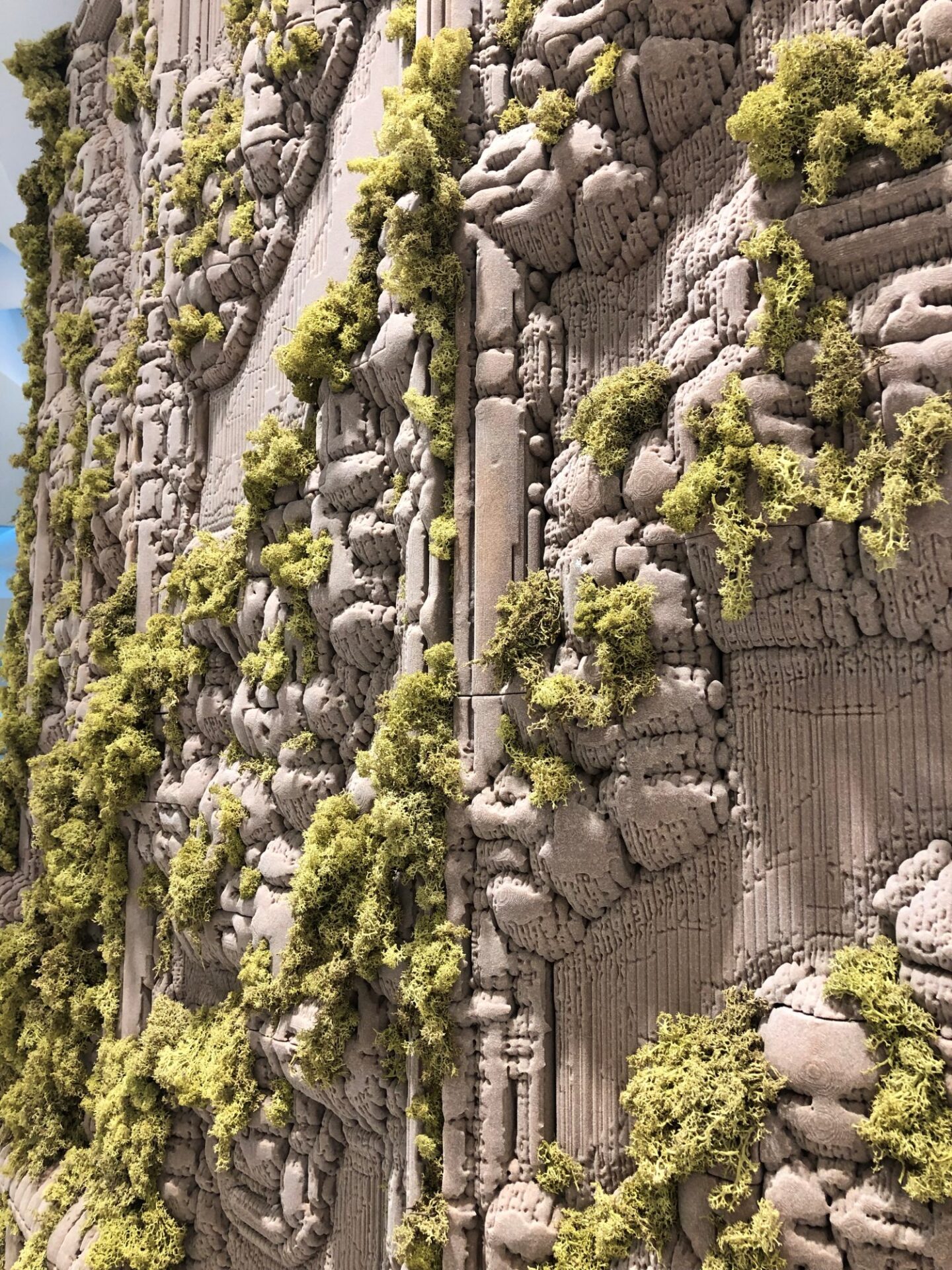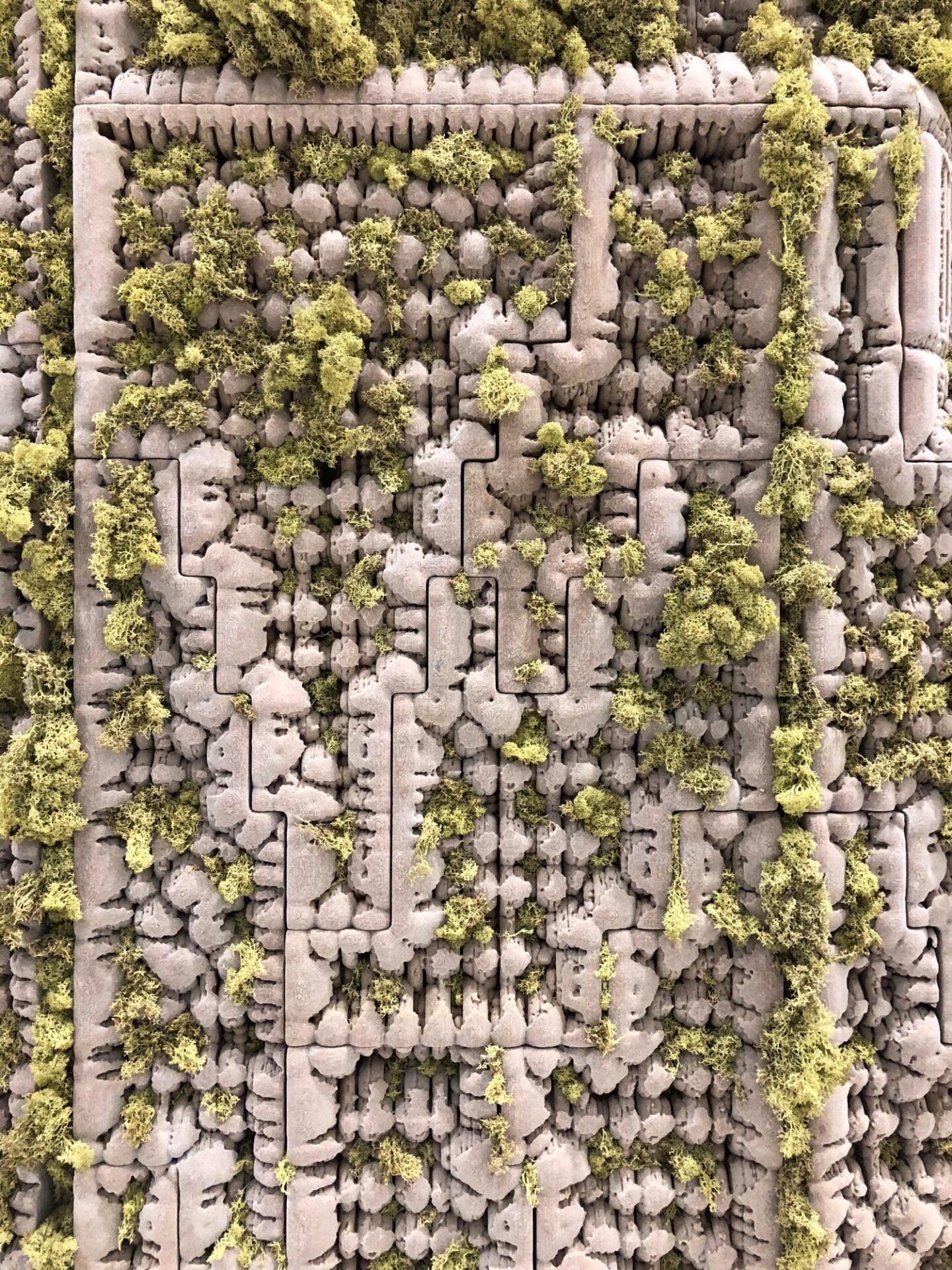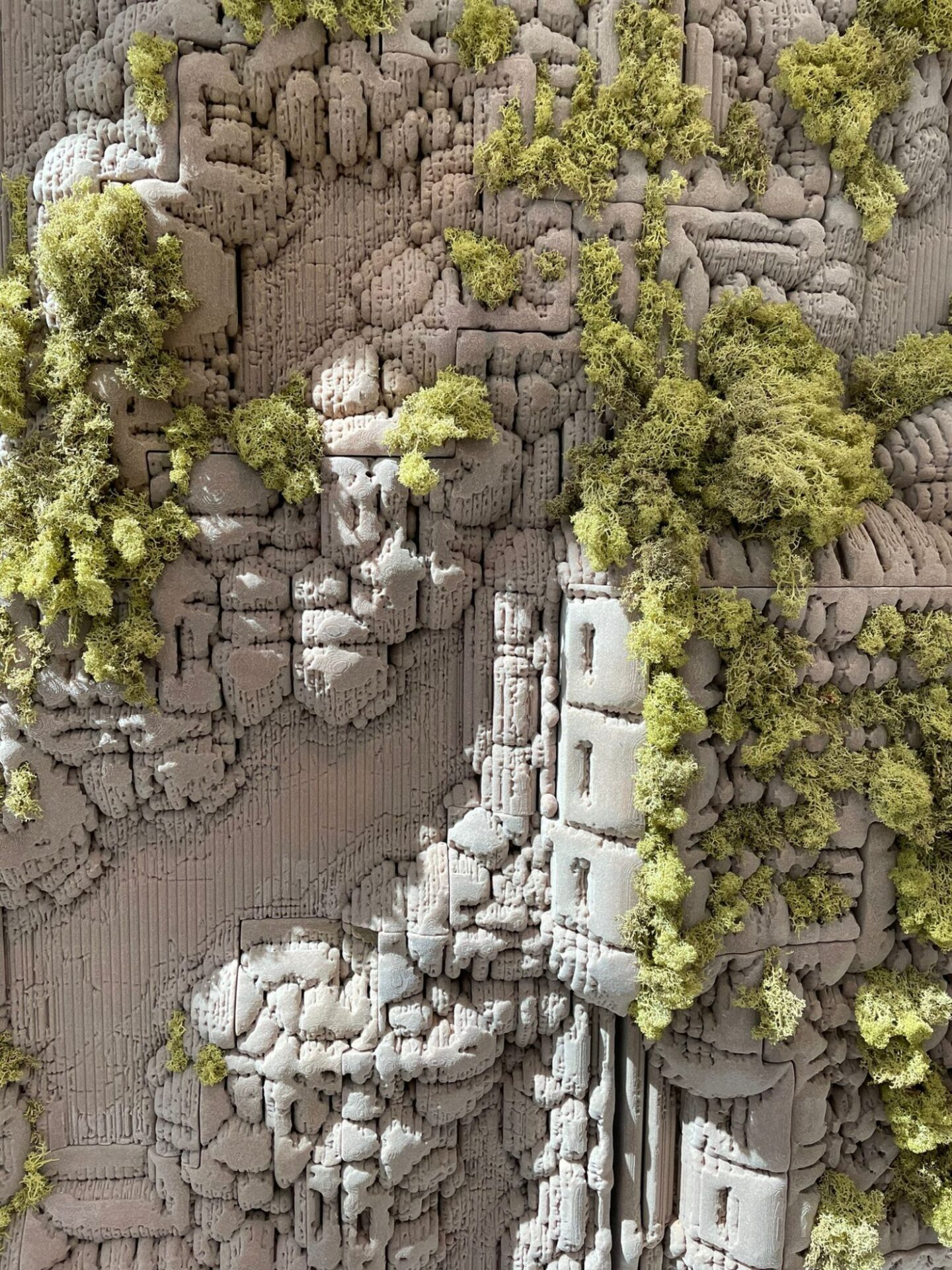The Nature in Architecture
Designed by Architect Barry Wark, Nàdarra is a sand installation that gives form to the evolving conversations around Architecture and Ecology. By Aarthi Sriram
The Nadarra sand installation explores the manifestation of ‘nature’ in architecture, reflecting an ecological sensibility and the place of humans within the Anthropocene, considering the interconnectedness of all matter in the design of an architectural surface. Designed for the Museum of the Future, in Dubai, the wall utilises circular materials and 3D printing technology; celebrating the inevitability of vegetation growth and weathering on all buildings and creating ambiguous forms that are both natural and artefactual at the same time; a reflection of our increasingly synthetic world.
 The installation is a work by Barry Wark, an architect and designer who combines practice with research and teaching activities at the Bartlett School of Architecture, UCL. Following over a decade working for reputable practices in London he established his eponymous studio in 2018. His work strives towards ecocentrism, rejecting that humans and their artifacts are impervious or separate to the natural world, instead exploring permissible forms of coexistence between human and nonhumans within the built environment.
The installation is a work by Barry Wark, an architect and designer who combines practice with research and teaching activities at the Bartlett School of Architecture, UCL. Following over a decade working for reputable practices in London he established his eponymous studio in 2018. His work strives towards ecocentrism, rejecting that humans and their artifacts are impervious or separate to the natural world, instead exploring permissible forms of coexistence between human and nonhumans within the built environment.
Motivated by the recognition that all buildings eventually erode, stain and weather, this project is designed to display its interconnectedness with its environment in other words, its ecology. It moves beyond the idea of an impossibly clean architecture, instead creating crevices and pockets for water and seed retention that can accelerate and promote the growth and presence of non-human organisms within its surfaces.
 The walls form implements biophilic design principles, such as multiscalar detail, organised complexity and highly differentiated but similar geometries that evoke the bulging and pocketing of the moss that grows within the surface itself. It has mysterious qualities as a product of the ambiguity surrounding its age, origins and fabrication process. It is striated with traces of chisel marks yet is eroded and smoothed as if by the weather. It has the stereotomy (the art of stonecutting) of ancient construction yet each part employs a complexity almost unimaginable to make by the human hand.
The walls form implements biophilic design principles, such as multiscalar detail, organised complexity and highly differentiated but similar geometries that evoke the bulging and pocketing of the moss that grows within the surface itself. It has mysterious qualities as a product of the ambiguity surrounding its age, origins and fabrication process. It is striated with traces of chisel marks yet is eroded and smoothed as if by the weather. It has the stereotomy (the art of stonecutting) of ancient construction yet each part employs a complexity almost unimaginable to make by the human hand.
 The project engages with the importance of materials and their life cycles in a built environment. Employing advanced 3D printing sand technology, the parts can be fabricated, installed, and then recycled up to eight times after use. Nàdarra takes advantage of the ability of 3D printing to create virtually unlimited geometric possibilities without the need for complex mould making. This has further environmental benefits as it therefore does not waste any material beyond what is used in the parts themselves during their fabrication.
The project engages with the importance of materials and their life cycles in a built environment. Employing advanced 3D printing sand technology, the parts can be fabricated, installed, and then recycled up to eight times after use. Nàdarra takes advantage of the ability of 3D printing to create virtually unlimited geometric possibilities without the need for complex mould making. This has further environmental benefits as it therefore does not waste any material beyond what is used in the parts themselves during their fabrication.
Nàdarra aims to draw people close through this engagement and questioning, bringing attention to the effects of the environment upon its surface. It considers its connection with the environment positive and attempts to break down the false duality between architecture and nature, instead considering the importance and beauty in the interconnectedness of all matter.




